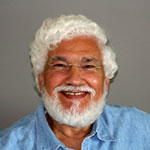June 19, 2018
Einstein and God
It is too difficult for any scientist to believe that our universe simply happened - it must have had a creator, a designing one. And Albert Einstein was no exception.
The reasoning behind these two facts of faith – an originating creator, one who did not just create, but designed – are simple. Scientists experience first-hand that everything we know was discovered, not invented by us. They also know what it takes to design such an amazingly complex universe, which is an infinite array of systems within systems.
In fact, they are very close to understanding the design, so intricate, yet at the same time so simple and beautiful. Their conclusion is that the original designer must not only be infinitely intelligent, but the greatest creative artist of all time.
Many scientists now use the language of faith, naming the unique designer of the universe as the Almighty, as God. They understand that any design contains interrelated and sometimes even contradictory factors that must be skillfully and elegantly resolved in order for the overall design to function harmoniously. If there is more than one designer, the goal of optimum functionality and sustainability is far more difficult, or even impossible, to achieve.
Albert Einstein was such a creative scientist. In 1905 – a remarkable year for him and for science – he came so close to understanding the origins of matter that he could marvel at the Creator who set it all in eternal motion. Over six months that year, from March through September, Einstein published five papers that transformed our understanding of nature or, as he put it, “God’s thoughts.”
John S. Rigden in his best-selling book Einstein, 1905 The Standard of Greatness, writes: “Of all human activities, thinking is the single activity that most clearly sets us apart from other life forms. Thinking is what makes us humans . . . Einstein’s 1905 is an illustration of the thinking species at its best, the thinking person’s standard of greatness.”
Rigden goes on to explain the contents of Einstein’s five papers: (1) on his particle theory of light, (2) on molecular dimensions, (3) on the theory of Brownian motion, (4) on his own theory of relativity and (5) on the equation for which he is most famous – E=mc2.
He quotes Einstein as saying, “What I’m really interested in is whether God [would] have made the world in a different way; that is, whether the necessity of logical simplicity leaves any freedom at all.”
The great American physicist I.I. Rabi commented even more grandly that “Einstein was walking the path of God.”
While Einstein was confident in the correctness of his theories, he had to wait until experimental verifications confirmed them. And when asked why he wasn’t more excited when news came that one of his theories was finally confirmed through experiment, he responded. “I knew the theory was correct.” But then he was asked what would have happened had the theory been refuted. “In that case,” Einstein responded, “I’d have felt sorry for God, because the theory is correct.”
Einstein was not being arrogant; he genuinely believed he had discovered what God allowed him to discover. For example, his iconic equation E=mc2 seemed to come out of the blue. But he was pragmatically capturing the mass-energy relationship in radioactive material.
Henri Becquerel discovered radioactivity in 1896, but until 1905 the underlying physics of it remained a mystery. It was known experimentally that radioactive atoms emit energy particles, but not where that energy actually came from.
Einstein thought that since radioactive energy might be produced at the expensive of mass, then it was possible that energy and mass were related. The mass of a body is a measure of its energy content, so if the energy changes by E, the mass changes in the same sense where E is divided by c2.
Rigden quotes Jacob Bronowski from The Ascent of Man where he writes:
“It is almost impertinent to talk of man in the presence of two men; Newton and Einstein, who stride like gods. Of the two, Newton is the Old Testament god; it is Einstein who is the New Testament figure. He was full of humanity, pity, a sense of enormous sympathy. His vision of nature herself was that of a human being in the presence of something god-like, and that is what he always said about nature. He was fond of talking about God.”








